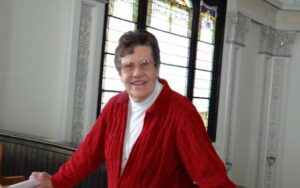All manner of stamina and dedication

Hna. Ciria and Ellie at Comunidad la Esperanza outside of Riberalta, Bolivia in the Amazon region
Hermana Ciria and I walked in the blazing summer sun onto a small wooden boat heading out onto Madre de Dios, a calm river in the Amazon that meanders by Riberalta, Bolivia – the heart of the Bolivian Amazon. A young adult worker on the boat looked at Hermana Ciria and recognized her. “I remember you,” he said. “You baptized my son.” She had also baptized several other family members. The two of them chatted, recalling the celebrations, providing updates. His son is now eight years old.
What was extraordinary about this moment was how ordinary it was. A father and a religious sister remembering with fondness the baptismal celebration that welcomed his son into the Catholic faith. It was the most ordinary of conversations in an extraordinary place – the Amazon, where the spiritual gifts of women have been unleashed and where bishops, priests, religious and laity collaborate closely to accompany a fragile faith on an even more fragile land.
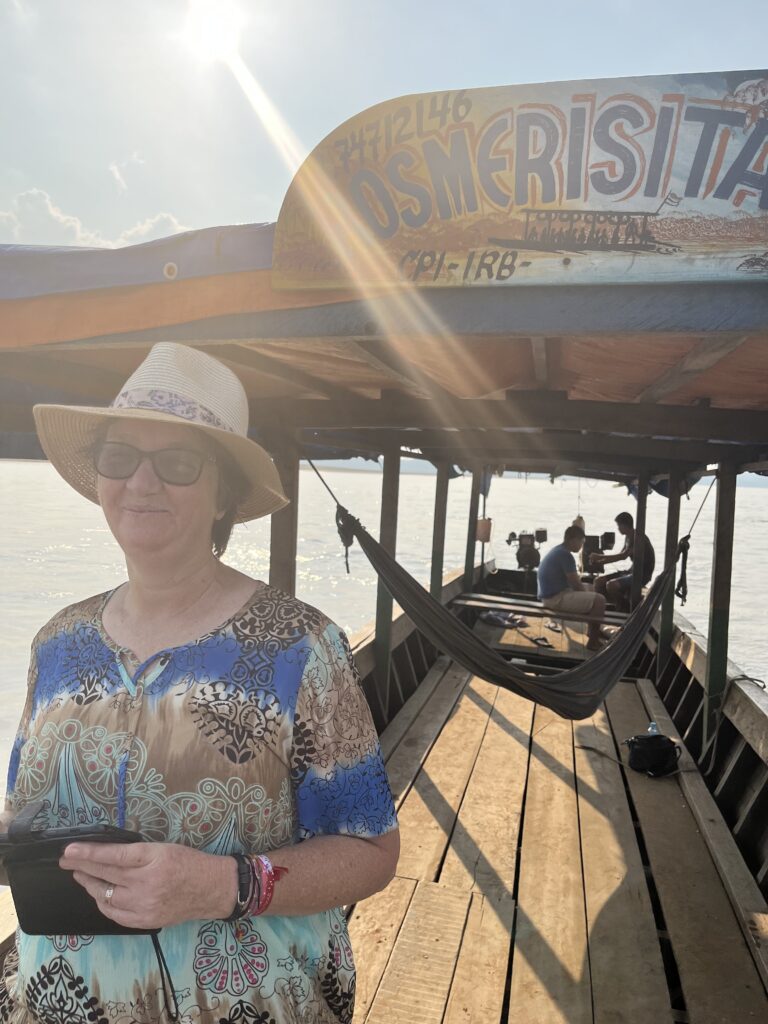
Following our recent Discerning Deacons pilgrimage to the Basilica of Our Lady of Guadalupe in Mexico City, I traveled with Divine Providence Sister Ciria Mees through Porto Velho, Brazil and onto Guayaramerín and Riberalta, Bolivia to witness to the work of Catholic religious and lay women who have — with great stamina, conviction, dedication, and sacrifice — accompanied the poor, indigenous communities, mothers, fathers,

children, grandparents. They also seek to raise the world’s consciousness about what is at stake in protecting the Amazon rainforest – often called the lungs of our planet. I hoped that my visit could spark our imagination in the United States to better understand where the Holy Spirit might be leading the Church in the third millennium and to build bonds of friendship and solidarity across the Americas – especially as the global synod begins its continental phase. Constructing unity, local Bishop Eugenio Coter told me, requires understanding the needs of others.
Walking with Ciria into the formation offices of the Instituto Pastoral Rural of the Vicariato Apostólico de Pando, where she served for nine years and directed for six, I’m struck by the maps hanging on the wall of wiggly Amazon rivers dotted with more than 160 small rural faith communities — a territory so vast that it could take up to nine days by boat to reach the farthest community. In this part of the world where there are few priests and with the permission of her bishop, Cira has baptized more than 1,300 children and adults. That the Catholic Church has a presence and can accompany people in these communities is largely due to the efforts of women like Ciria who have braved all manner of weather to travel by boat or to set up camp sites in communities where they travel along dirt roads by auto. While I was there, we visited a few communities – La Esperanza, San Juan del Urucu, San Juan Km 27, and San Cristobal. The largest community had about three thousand people living on it. The smallest had 16 families.
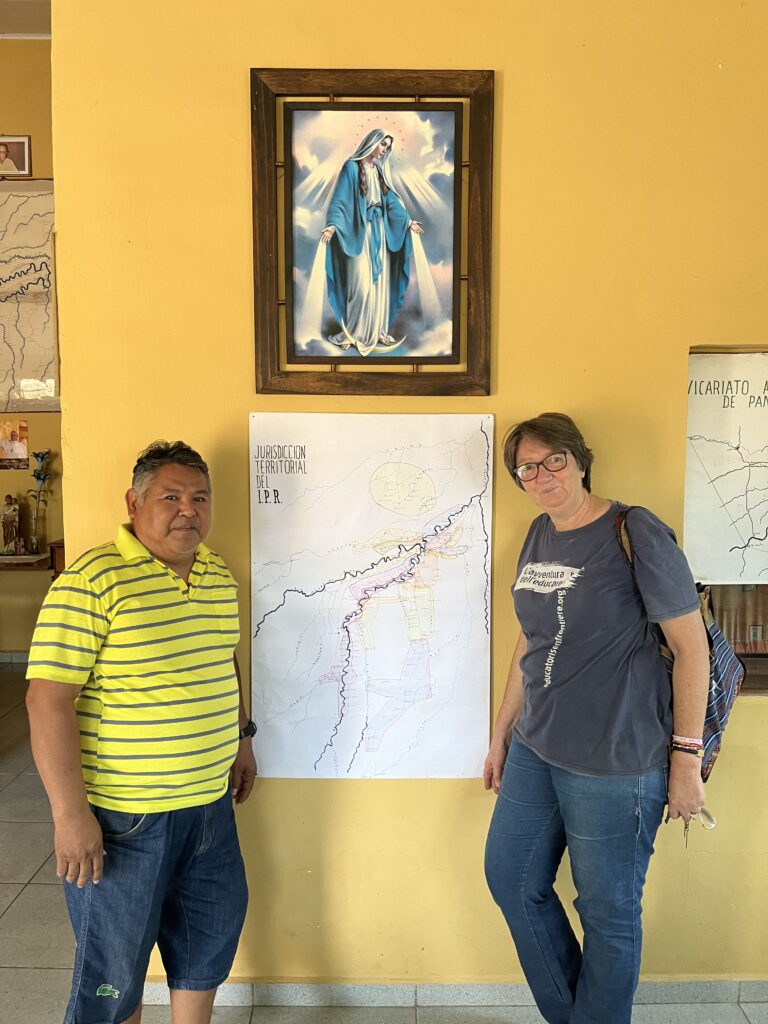
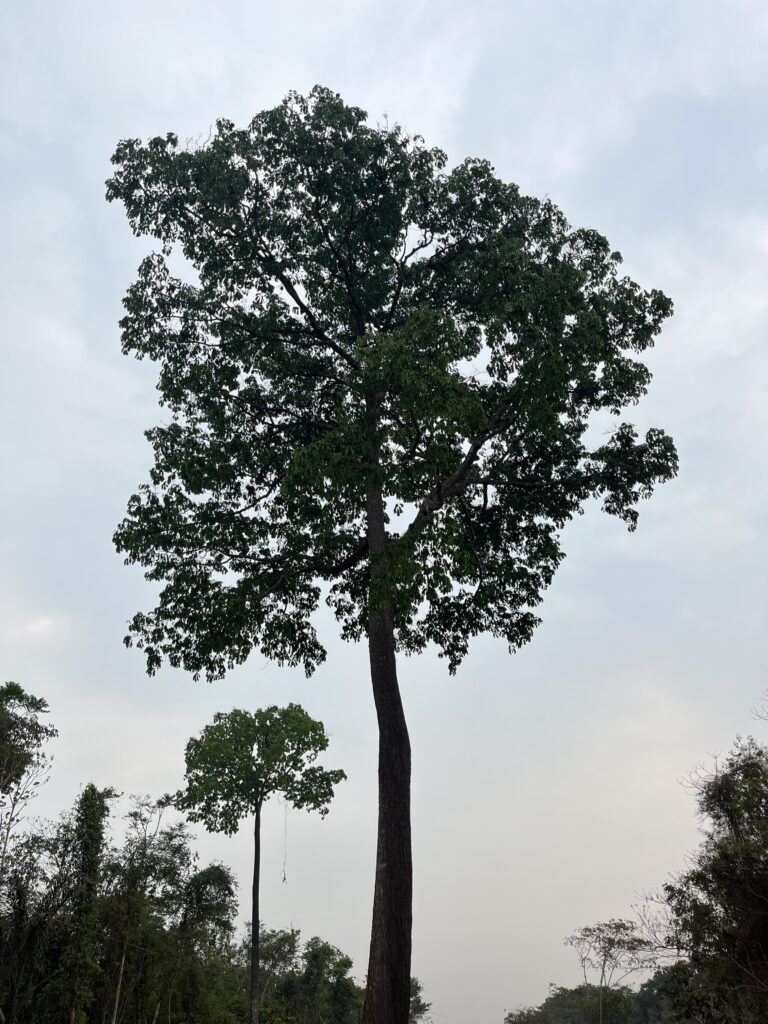
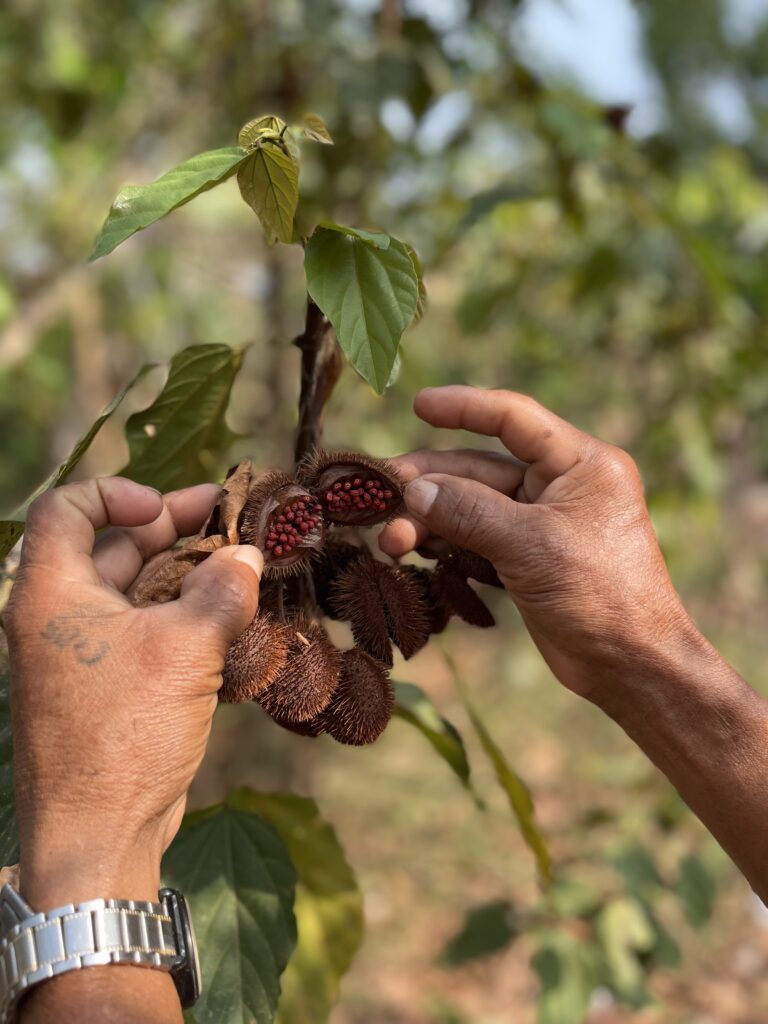
Each time we were greeted warmly, and Ciria was quick to engage the animadora or animador in conversation. Listening to community members is one of Ciria’s strengths. We listened to mothers, fathers and grandparents who were the first to arrive while we waited for others to join us. One time a group of 5-year-old girls delighted in teaching me their games. After enough people had assembled, around 30 or so, Ciria presided over the Catholic Liturgy of the Word with Communion. We sang popular hymns. Community members, often youth, took turns lectoring. Several times Ciria invited me to offer the Gospel reflection. Afterwards, communities shared cookies, empanadas, or a home-made fruit juice made from any of the many varieties of fruit trees growing nearby. Confirmation students in one community wanted me to teach them English words while I practiced a few words in their ancestral indigenous language. One time we went in search of tall almond trees — almonds being a key export crop in the region.
In the Amazon, leadership is formed from the grassroots; each faith community seeks to identify an animator and a catechist to prepare community members for sacraments like baptism, first Communion and confirmation. Ciria might make it to the community only 1-2 times a year and a priest even less frequently, so the role of the lay animator and catechist is critical to sustaining a rural faith community. The institute assists by providing ongoing faith formation to these leaders. After nine years of dedicated service and accompaniment, Ciria has recently returned to her native Brazil to complete a theology master’s program. Lay leaders like Jose Antonio and Sandra are stepping up with the passion and commitment needed to keep ministering in rural communities.
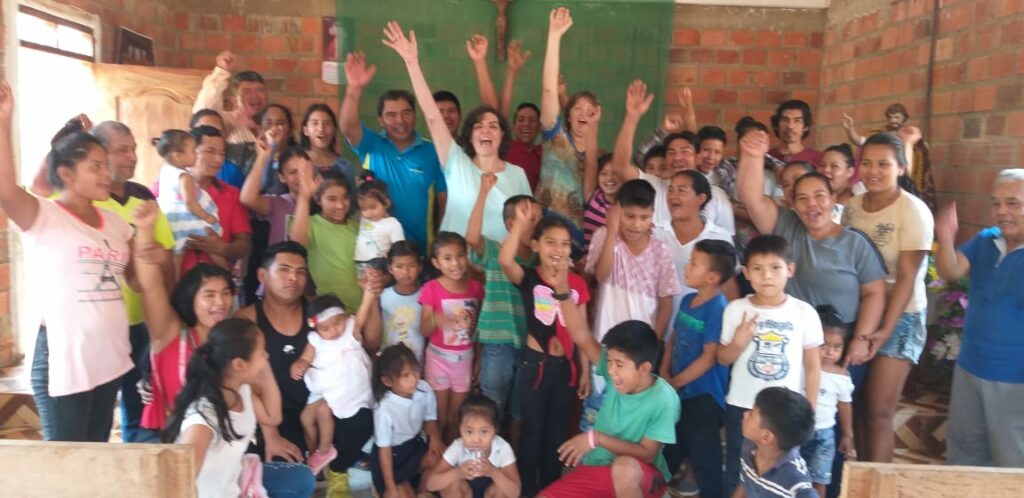
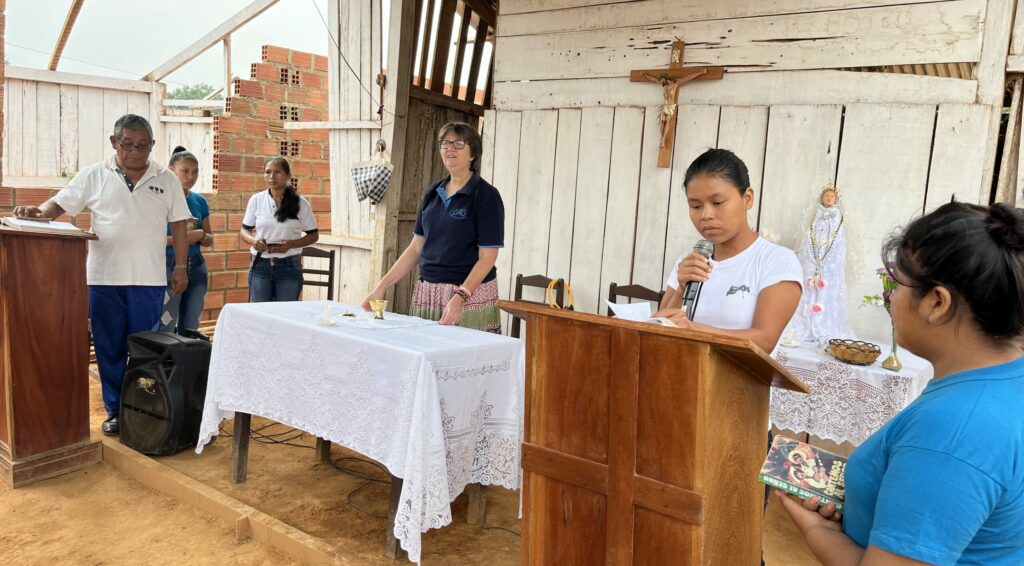
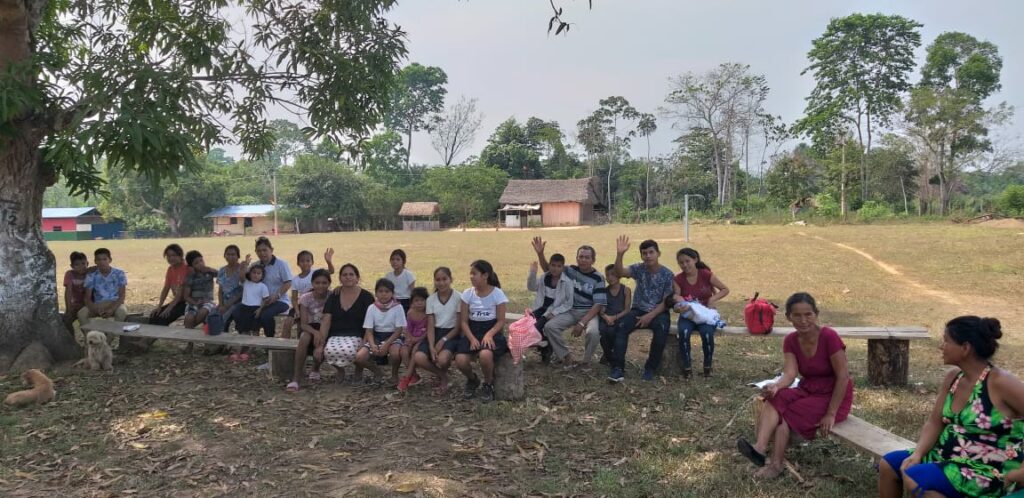
Integral Ecology – Encountering the Cries of the Earth
I traveled to the Amazon having read about the problems of deforestation, but not expecting it to be so obvious. Sadly, there was a lot of visible smoke wafting in the air as cattle ranchers burned their ground cover to make way for new pasture to grow that will feed the cows supporting the local and global demand for meat. Some days there was so much smoke that several flights at the small Riberalta airport were canceled because of poor visibility.
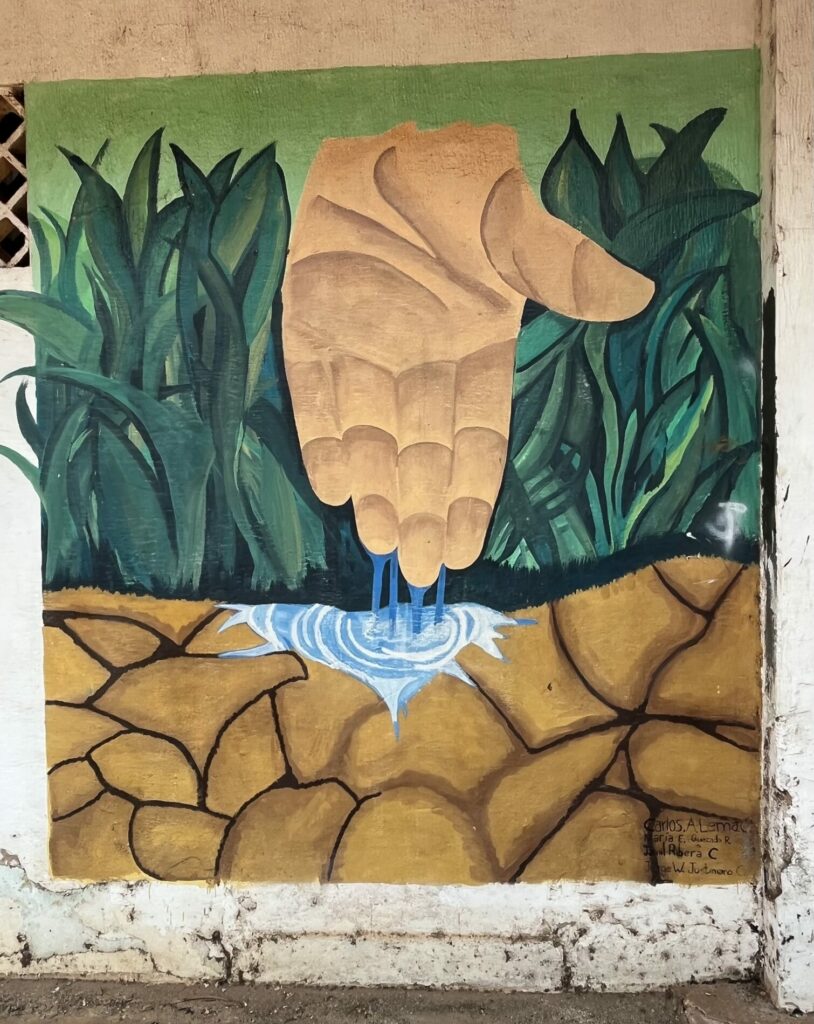
It is to these poor communities living in the campo and indigenous communities with ancestral knowledge of caring for the land that God has entrusted the need to sound the alarm to take better care of our common home. Children at Colegio Católico Roberto Fransen in Guayaramerín have painted murals on their school’s walls as have students from Colegio San José in Riberalta. The hope is that art can raise consciousness and create a culture that prioritizes caring for Mother Earth. It’s a daunting task.
I looked at the young people’s art and wondered. Imagined. Dreamed. Could there ever be a time when all of us in the Americas would invest in the efforts of indigenous and local Amazon communities to plant trees – millions of trees? Turning more than a few cattle ranches back into rainforest and improving the air quality for all the world – allowing the planet to breathe with its full Amazonian lungs.
Caring for our common home is everyone’s responsibility, and our own local communities could likely use more trees. During this continental phase of the synod – as we envision a path to greater listening and understanding across the Americas – it’s good to highlight the integral connectedness between the extraordinary, ordinary women whose diaconal work keeps faith and hope alive in a vital part of the world, and the cries of the earth, calling for our conversion.

